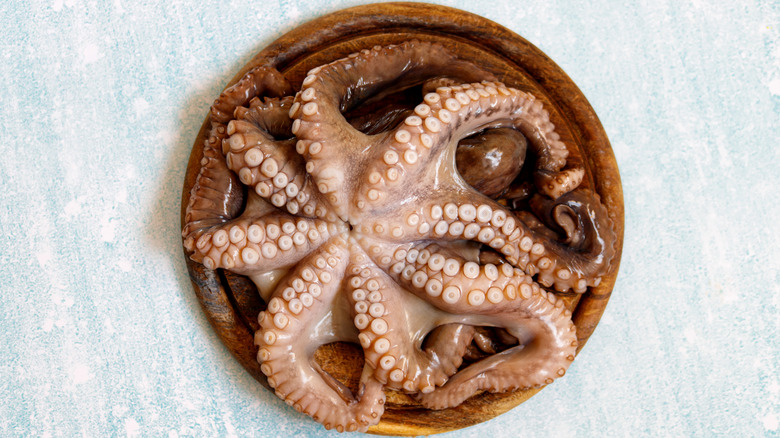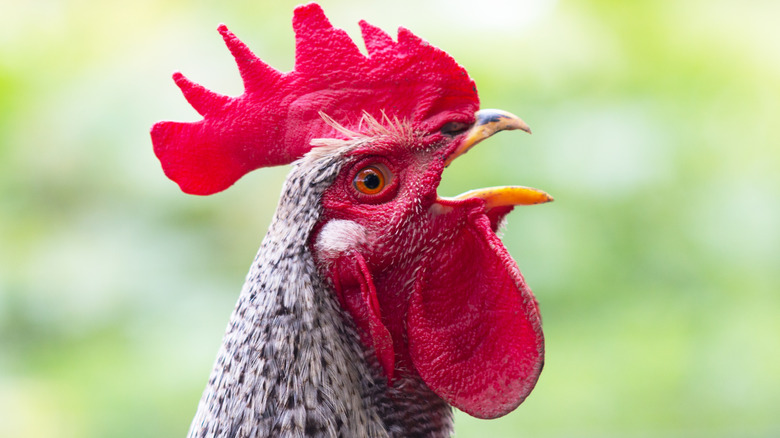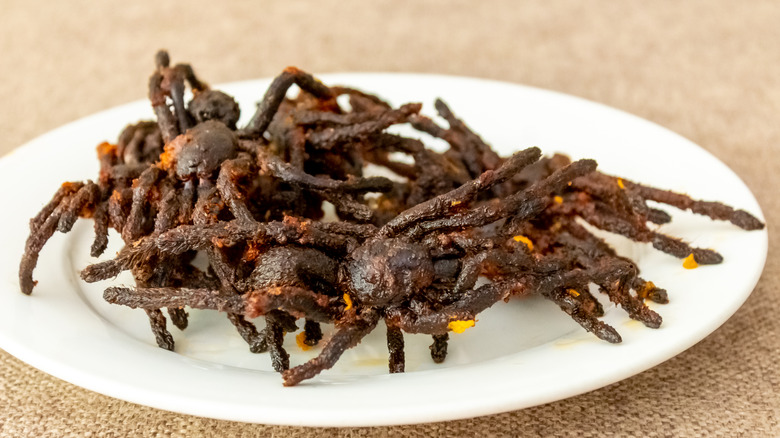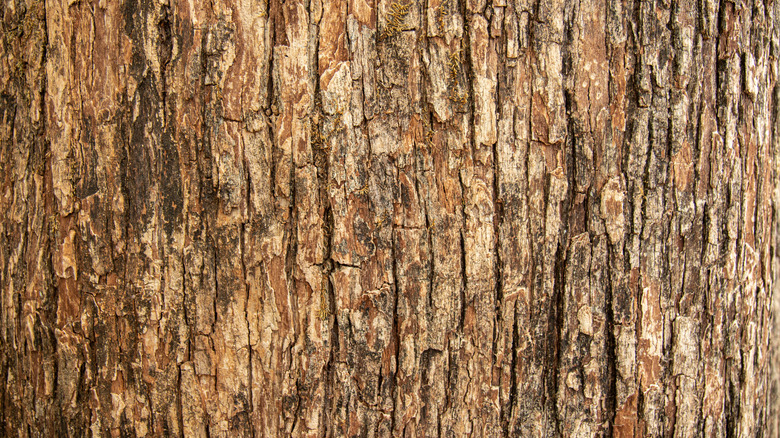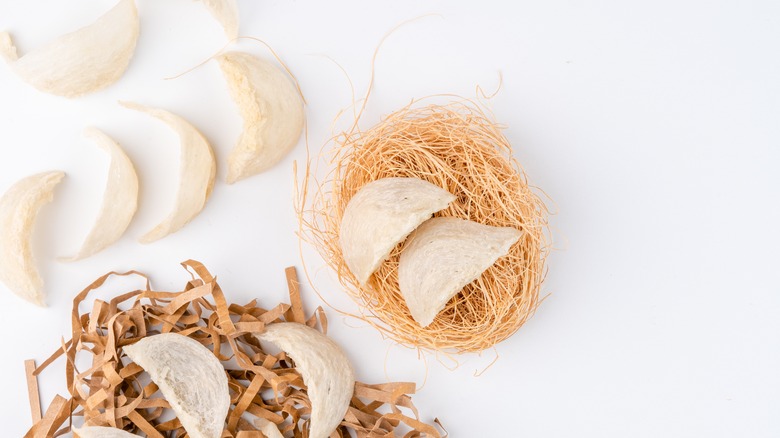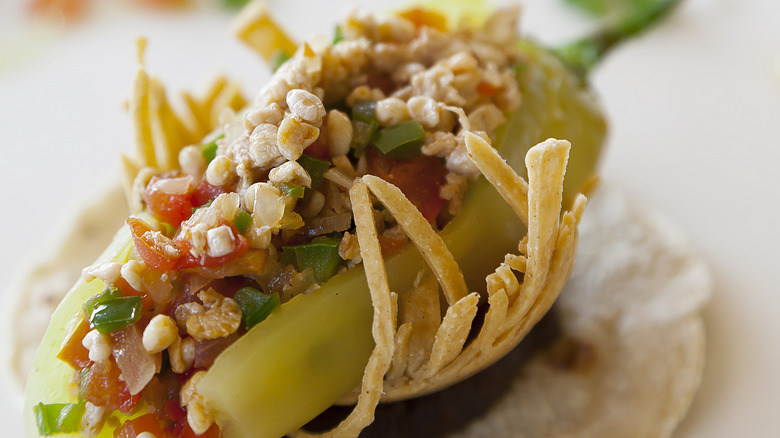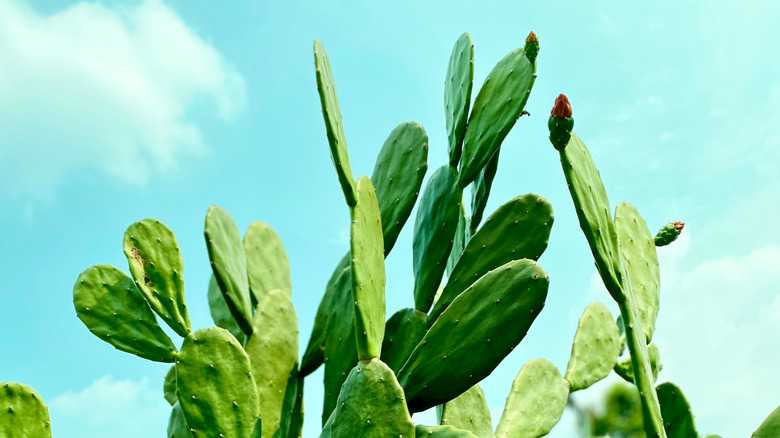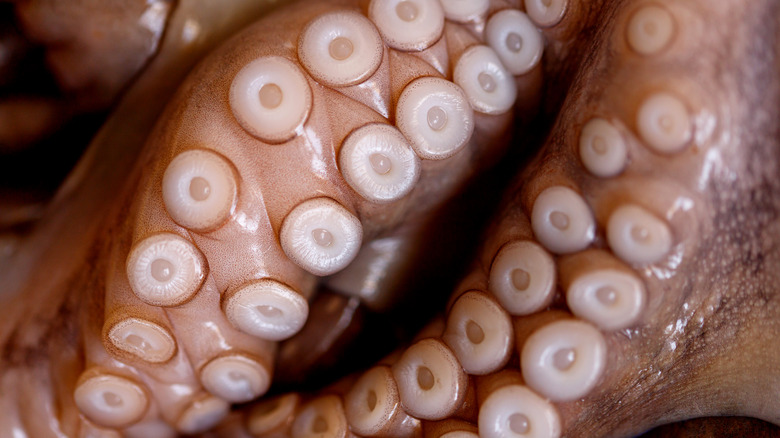11 Weird Things You Didn't Know Were Edible
There's no denying that our lives literally revolve around food. From breakfast, to lunch, to dinners, and a million snacks in between, it's no exaggeration to say that food is life. But how many of you have stepped out of your comfort zone to try something new? We're not talking about trying that Chinese place that just opened up near your home, either. We are talking about trying some really weird foods that some might find absolutely revolting.
Of course, "revolting" is a relative term and, with an open mind, you may surprise yourself and your taste buds with some new culinary delights. From eggshells to ant eggs and bird's nests, not only are these foods edible but also they can also be quite nutritious and even beloved in their home cultures. If you are creating your travel bucket list, feel free to add some of these exciting new dishes for some truly adventurous eating.
Gold
Gold represents luxury and status, but did you know this glimmering metal can also be consumed? Of course, that doesn't mean you should start biting into your gold jewelry. Edible gold typically comes in the form of 24 karat gold leaf. While gold jewelry may contain other metals and is therefore unfit for human consumption, edible gold leaf has a purity of 99.9%. After all that work, however, it's of no use to your body, given that your digestive system simply can't absorb edible gold (via The Takeout).
Gold leaf is made by melting gold and pouring it into a bar. That bar is then rolled and beaten until it's incredibly thin. But how is it actually used? Gold leaf is often brushed atop, painted across, or wrapped around a variety of foods, including shimmering pastries that can look like something straight from a Michelin-starred restaurant menu.
As for taste, edible gold is flavorless, according to one Quora user, though you can detect a delicate crunch. But edible gold is really more about visual appeal than flavor.
Cockscomb
Cockscomb that flash piece of crimson flesh that sits atop a rooster's head. Perfectly edible and with a unique texture, this ingredient is the star of many traditional recipes. In France, you may find it in patisserie or as a garnish, while in other settings it can also feature in dim sum (via Vogue). Cockscomb is also popular in Italy, where chefs have chopped it up and mixed it with chicken liver and eggs to make a mouth-watering pasta sauce (via Chef's Resources).
Though it is still incredibly rare to find cockscomb on a menu, it is making something of a comeback in the culinary world. According to Vogue, NYC restaurant Le Coq Rico has introduced a new egg dish with a side of the rooster's comb. The comb is cooked down into croquettes to be served with another typically-ignored part of the chicken: gizzards.
One Quora user shared their experience of eating cockscomb in a stew. They likened the texture to similar to that of a tough pork rind. Plus, you can also add it to chowders to be enjoyed. Another user on Quora says they are usually favored for their gummy texture rather than the flavor.
Fried tarantula
Eating spiders seem like a concept straight from an episode of "The X Factor," but deep-fried tarantulas are quite the thing in Cambodia. In the capital of Phnom Penh, you may find these arachnids served on the street and in restaurants. Would you try some fine dining with a side of crunchy fired spiders with soft interiors?
According to DW, tarantulas were once consumed more out of necessity than curiosity. After Cambodia gained its independence in 1953, the country's situation became dire during the 1970s dictatorship of Pol Pot and the Khmer Rouge, when millions faced starvation. In the search for food, not only spiders but also scorpions were targeted as a way to satiate hungry stomachs. Today, it is thankfully consumed as a novelty or delicacy.
Cooking this species is about as easy as it gets, with a simple blend of salt and seasonings applied to the tarantula before it's fried. Gordon Ramsay tried this dish in Cambodia, where, though he didn't appear to enjoy much of the experience, he did seem to like the legs and described the texture as crunchy. However, he ended up spitting out what's traditionally the prized part: the spider's belly.
Egg shells
While eggs are a staple in many a household, you may not know that the entire egg is edible, including the shells. Properly prepared, shells are perfectly safe to consume and can be an excellent source of calcium. As Healthline notes, half an eggshell contains a full daily dose of the nutrient, as well as proteins and other essential minerals that may help reduce the risk of osteoporosis in later life. Egg shells are also commonly used as a fertilizer.
But how to consume shells? One Redditor simply eats boiled eggs with the shell on. Talk about hardcore! However, eating large fragments of egg shells can pose a threat to your health, as jagged shells can cut your throat and internal organs. Perhaps a better way to consume egg shells is to grind them into a fine powder and add them to food or drinks. Another Reddit user notes that this egg shell powder can be used as a calcium supplement. However you prepare your shells, always make sure to boil them beforehand to kill any bacteria that may be lingering on the surface.
Tree bark
Though we've given trees a rather mystical reputation as life-giving, fruit-bearing beings, they, too, are edible. We're not just talking about the fruit or even the leaves, either. We're talking tree bark.
Depending on the species of tree, bark can be edible and safe to consume. Just make sure you know what to look for before barking up the wrong tree. As OutdoorLife notes, the part that lies beneath the outer layer, known as the cambium, is the edible bit. In Sweden and Finland, this section of tree bark can be incorporated into loaves of bread. It's typically toasted and then ground into a powder before being mixed with rye flour and other, more traditional bread ingredients.
Tree bark tastes relatively bitter, but the intensity varies from species to species. As per Primal Survivor, some barks taste sweet due to the sugar content of the tree's sap. Some barks may also have a spicy flavor, while others even carry a hint of mint. They all contain starches, vitamins, and other nutrients that are easily digested by most people.
Bird nests
According to Healthline, edible bird's nests are typically made by small birds commonly known as swiftlets. Their nests are made of solidified regurgitated saliva, sometimes containing the bird's feathers and other debris. The inedible stuff is usually painstakingly cleaned out with tweezers before the nest itself is cooked. In some regions, harvesters must obtain a special permit before they can enter the caves where swiftlets build their nests. In other places, the bird's nests are cultivated on farms.
However it's collected, an edible bird's nest is a work of art, resembling a hammock with closely knitted threads of red, yellow, or white. The consumption of bird's nests is quite popular among the Chinese and many other Asian communities, where it's been lauded for its medicinal properties for centuries. According to Healthline, Chinese diners often add it to their soups and serve it as a main course. However, the nests are costly, meaning that meals incorporating bird's nests are often used to show high status.
A Reddit user shares their experience of having an expensive bowl of bird's nest soup, which they said was texturally like "silky glass." However, the nest itself was devoid of flavor.
Ant eggs
Ants eggs, also known as escamoles in Mexican cuisine, can be served in many ways. According to MyRecipes, escamoles have their roots in the kitchens of indigenous peoples before Europeans landed in Central America. Other food sources of the time lacked sufficient amounts of protein, and so insects became a new source of nutrition. They were so popular that some varieties, like ant eggs, became a status symbol that were served only to royals.
According to My Fitness Pal, a 100-gram serving of raw escamoles have around 40 grams of protein and 15 grams of carbs. You can prepare these eggs with garlic, onion, and epazote along with puréed avocado and powdered black beans. As for the flavor, one Redditor who had ant eggs in an omelet claims they taste like "little balls of sweet milk." Another user said that it tastes mildly nutty and has a chewy texture.
Cactus
Cacti, as we all know, are often covered with thorny spines that can injure unwary people. But what about eating them? Edible cacti are not breaking news in the culinary world. According to Matador Network, there are numerous ways you can enjoy cactus. You can fry the pads of certain species, grill them, juice them for use in cocktails and other drinks, and even make delicious jellies from the cactus flesh.
However, you can't just eat any cacti. There are certain species you must avoid as some contain toxic alkaloids, which can produce vomiting and hallucinations. Edible ones include the dragon fruit, prickly pear, and saguaro varieties (via Matador Network).
What do cactus actually taste like? According to Green Matter, cacti offer a diverse flavor profile, depending on the species you're eating and what part of the plant is on your plate. Some varieties are sweet, especially if you're eating the cactus fruit, while others may be wash-your-tongue bitter. Dragon fruit cacti can taste reminiscent of raw melon. Meanwhile, one Quora user compares the taste of prickly pear cactus pads to green beans.
Rose
Picture this: you're walking in a luscious green garden with fresh roses in bloom. You stop to smell one, and you can't helping thinking that you want to have a taste of the sweet, sweet nectar-filled flower. But is that safe?
Fortunately, yes. In fact, roses contain a lot of nutrition from vitamins A and C, as well as minerals like potassium, iron, and calcium. You should exercise some caution and make sure that the plant hasn't been sprayed with pesticides or other harmful substances before chowing down on the pretty petals (via blume)
Apart from the petals, the plant's leaves, buds, and rose hips are also used in various dishes. Their flavor profile is rich and diverse, imparting fruity aromas as well as minty and peppery flavors, though they're more known for their fragrance than taste (via Plant Addicts). According to Tyrant Farms, roses can be added to a variety of meals and can taste great in teas, syrups, and even butter.
Tuna eyeballs
Fish eyes may be something not all can digest, but it is definitely part of the traditional Japanese palate. Tuna eyeballs are the size of tennis balls, rather chewy, and can be bland on their own. However, if they're lightly braised or sautéed, the soft insides are the real stars, making tuna eyeballs a popular appetizer (via Atlas Obscura). This delicacy can be served as a bar snack or party appetizer in Japan. In South Korea, it can also be found as a shot made with soju and the liquid from inside tuna eyeballs, called "tuna tears", as per CNN Travel.
Knowinsiders notes that there are some beneficial aspects of this food, including potentially lowered cholesterol levels due to the presence of vitamin B and omega-3 fatty acids. Tuna eyeballs are also high in protein and might help prevent many cardiovascular problems. Travel notes that this dish became sought-after only in the '90s, when some began to tout its health benefits. And if you're presented with a plate of tuna eyeballs, just remember to eat the fat before getting to the eyeball itself and enjoy the squid-like flavor.
Live octopus
For some, eating live octopus is a thrill unlike any other. Live octopuses can be eaten in places like South Korea, where it's known as sannakji. However, if not appropriately prepared, live octopuses can actually present a choking hazard due to those still-wriggling arms. To avoid this, it's often chopped into small piece first (via Insider).
Though eating live animals presents a serious ethical dilemma for diners, octopus can be a healthy component of a meal. According to WebMD, octopus is high in protein, low in fat, contains many antioxidants, and might help maintain healthy blood sugar levels and prevent cancer. They also contain fairly high amounts of omega-3 fatty acids, which can help lower cholesterol and strengthen heart function.
One Quora user who ate live octopus describes the texture as seriously rubbery and emphasizes the importance of chewing, lest you choke. A Redditor notes that their live octopus tasted like gochujang and stuck to their tongue.
